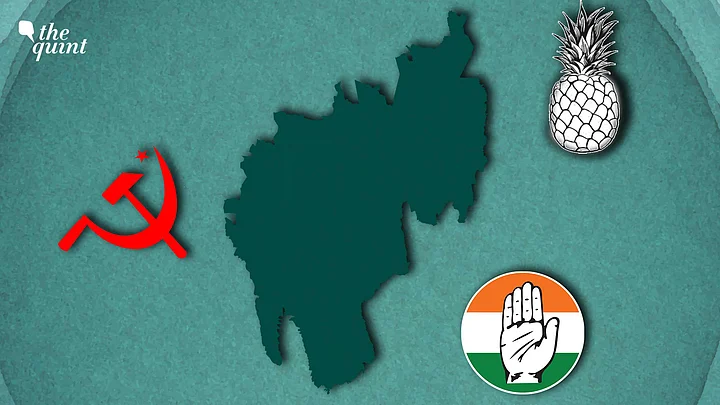The BJP-Indigenous People's Front of Tripura alliance is heading for a slender majority in the Tripura Assembly elections. However, the result may have been different had the Opposition parties co-ordinated better with each other.
The BJP-IPFT's vote share actually fell significantly compared to 2018 - from close to 51 percent between both the parties to about 40 percent in 2023. In terms of seats too the tally fell from the 44 seats the alliance had won in 2018.
However, in as many as 24 seats, the BJP-IPFT alliance may have won due to a split in votes between the Left-Congress alliance and the TIPRA Motha.
Which are these seats?
Does it necessarily mean that a Left-Congress-TIPRA alliance could have defeated the BJP?
We'll answer some of these questions in this piece.
Seats BJP-IPFT May Have Won Due to a Vote Split
Here are the list of seats where the sum of the votes polled by Left-Congress and TIPRA Motha are more than that of the BJP-IPFT alliance.
Krishnapur
Bagma
Santirbazar
Jolaibari
Manu
Chawamanu
Pencharthal
Amarpur
Bagbassa
Bishalgarh
Chandipur
Dhanpur
Kalyanpur-Pramodnagar
Kakrabag-Shalgara
Kamalasagar
Kamalpur
Khayerpur
Majlishpur
Mohanpur
Pabiachara
Panisagar
Rajnagar
Surma
Teliamura
Expand
Then in one seat, the Trinamool Congress polled a vote share more than the difference between the BJP and the Left-Congress alliance - Ramnagar.
Eight of these seats are ST reserved constituencies while 18 are general or SC seats.
Would a Left-Congress-TIPRA alliance Have Defeated the BJP?
Now, every party has a right to contest as many seats that it likes. And the argument that parties could have won had they contested together always makes sense retrospectively. Often it isn't always a simple two-plus-two arithmetic.
For instance, many of the TIPRA Motha voters aren't just anti-BJP but also anti-Left. The same goes for TMC voters. Similarly, many of the Left's non-tribal voters may not have been comfortable with TIPRA Motha's promise of a Greater Tipraland.
However, it is true that both TIPRA Motha and Left-Congress were essentially fighting on an anti-BJP plank and maybe having some kind of coordination may have helped them win a few more seats.
For instance, take ST-reserved seats like Simna, Mandaibazar, Takarjala, Ramchandraghat, Asharambari and Ampinagar, the Left-Congress alliance performed poorly and the TIPRA won by huge margins.
However, in ST seats like Krishnapur and Santirbazar among others, the Left did reasonably better and ended up splitting anti-BJP votes.
The same may have happened in a few non-tribal seats as well. For instance in Bishalgarh, the TIPRA Motha put up a Muslim candidate and polled more votes than BJP's margin. Then the party fielded tribal candidates in a few general seats like Amarpur and Kalyanpur-Pramodnagar and this may also have led to a split of anti-BJP votes.
What was probably required was for the Left-Congress to acknowledge TIPRA Motha's leadership in tribal areas and the reverse arrangement in non-tribal areas.
Given the BJP's slender margin overall and the larger loss in vote share, it does seem that a pre-poll alliance between the Left-Congress and TIPRA Motha may have been able to defeat it even with a less than perfect transfer of votes.
(At The Quint, we question everything. Play an active role in shaping our journalism by becoming a member today.)
